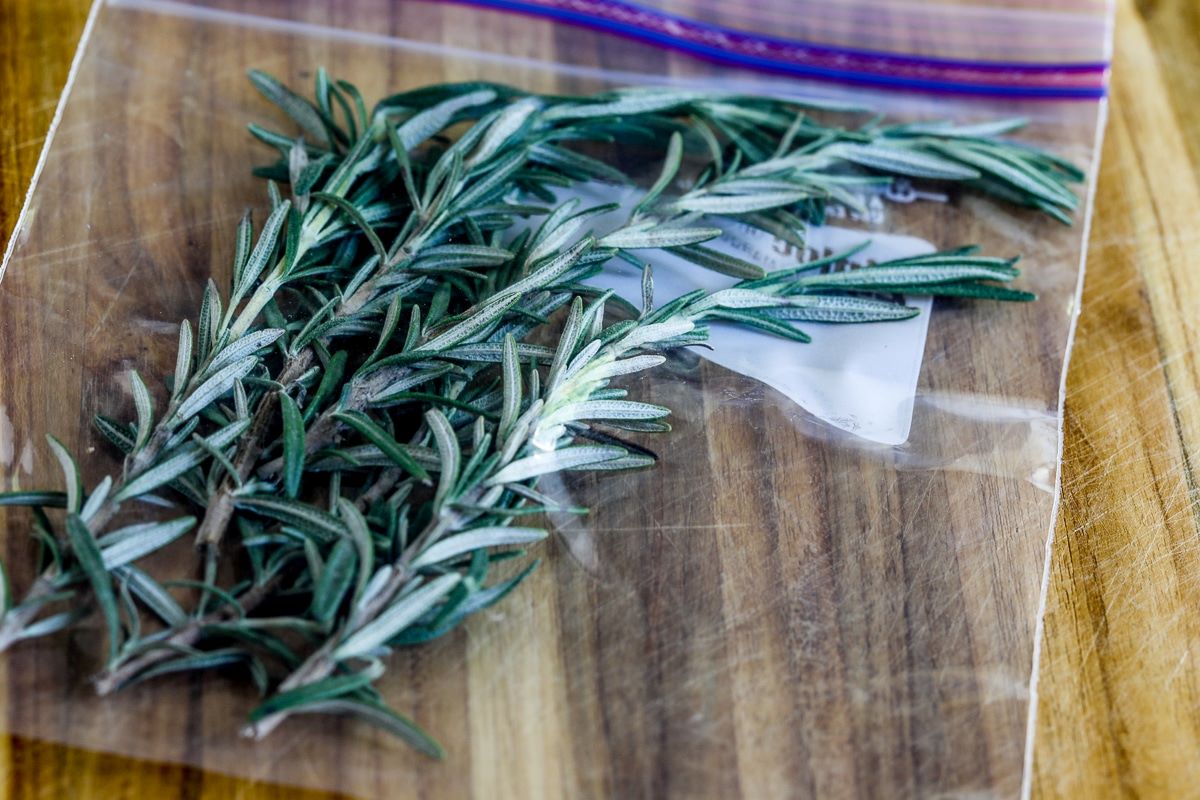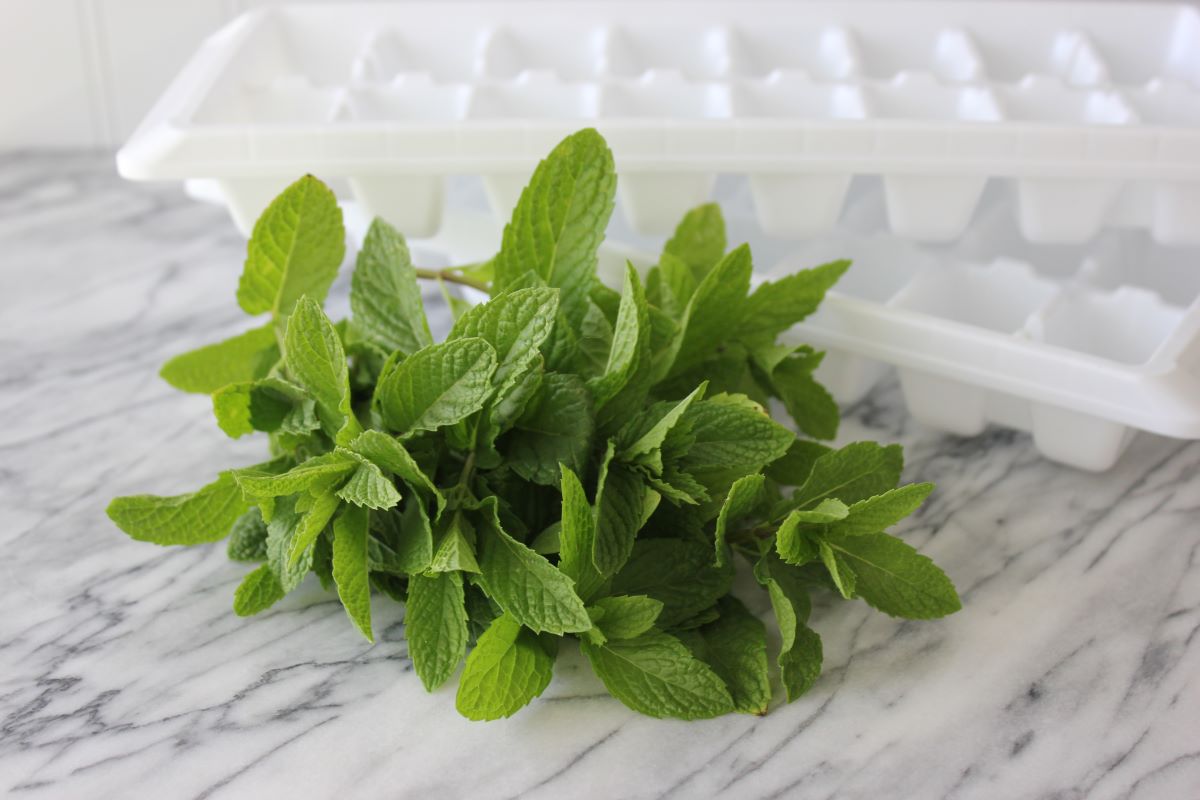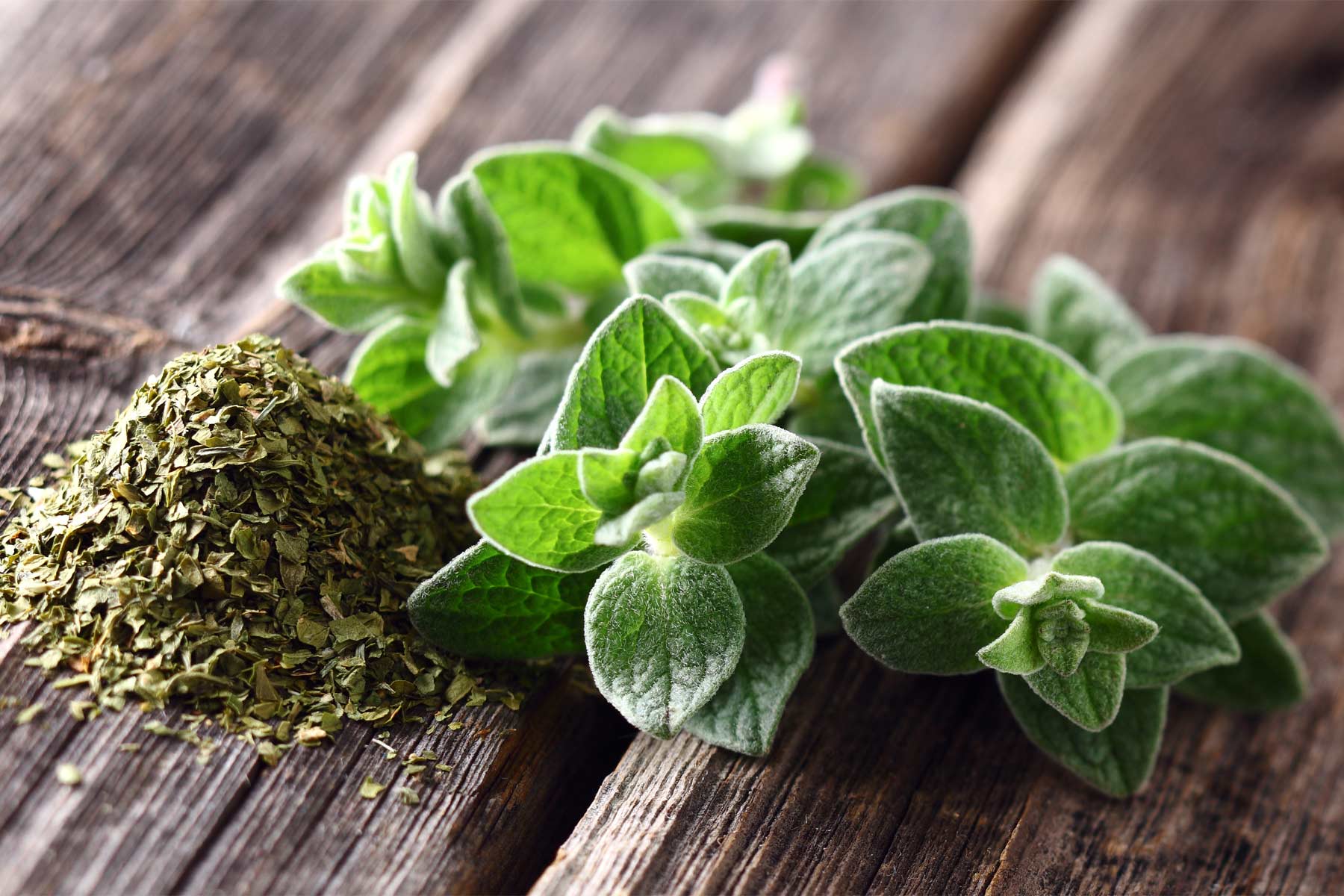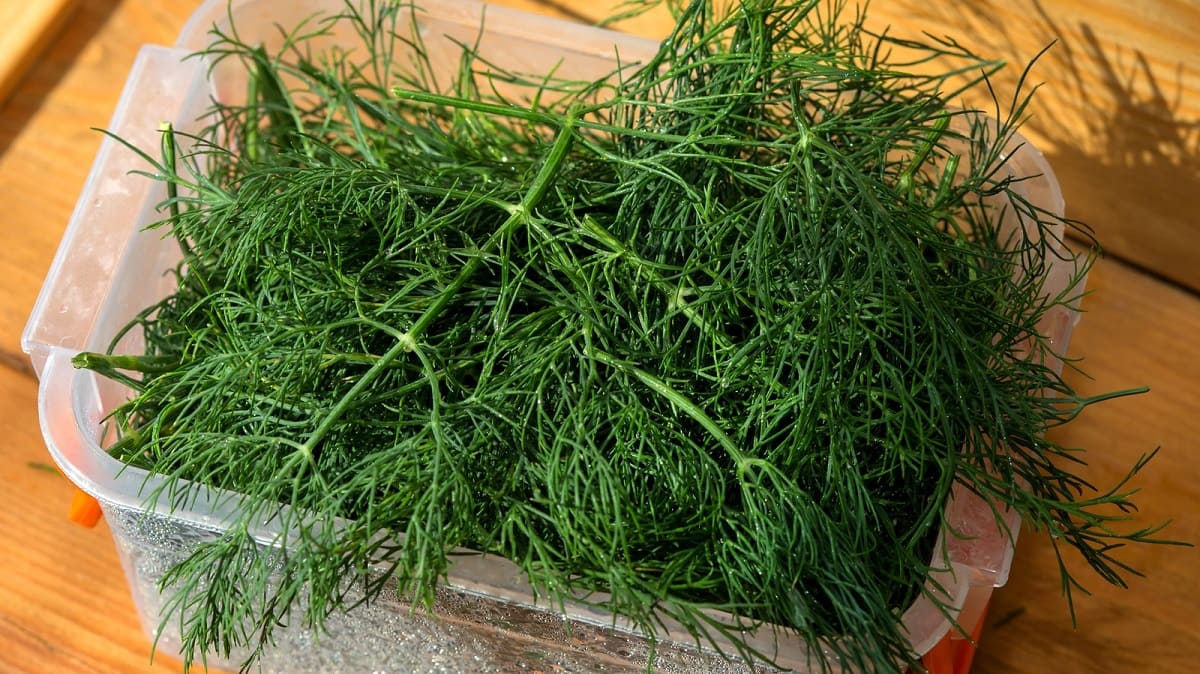

Articles
How To Store Fresh Turmeric In Freezer
Modified: August 24, 2024
Learn the best way to store fresh turmeric in the freezer to prolong its shelf life and preserve its nutritional benefits. Find helpful articles on turmeric storage techniques.
(Many of the links in this article redirect to a specific reviewed product. Your purchase of these products through affiliate links helps to generate commission for Storables.com, at no extra cost. Learn more)
Introduction
When it comes to cooking with fresh turmeric, it’s essential to have a steady supply. However, this vibrant yellow spice can be a bit tricky to store for an extended period. Fortunately, freezing fresh turmeric is a fantastic option to preserve its flavor, color, and beneficial properties.
In this article, we will explore the process of storing fresh turmeric in the freezer, step by step. We will also provide useful tips to ensure maximum freshness and quality when using thawed turmeric.
But first, let’s understand why freezing fresh turmeric is the ideal method for long-term storage.
Key Takeaways:
- Preserve the freshness and health benefits of fresh turmeric by freezing it, ensuring year-round availability and convenient use in various recipes.
- Properly store and label frozen turmeric, and experiment with different storage methods to maintain its flavor, aroma, and texture for extended periods.
Read more: How To Store Fresh Ginger In The Freezer
Why store fresh turmeric in the freezer
Fresh turmeric is known for its vibrant color, distinct flavor, and numerous health benefits. However, its shelf life is relatively short, especially when compared to its dried counterpart. The curcumin compound found in turmeric, which provides its therapeutic properties, begins to degrade over time due to exposure to light, air, and moisture.
By storing fresh turmeric in the freezer, you can significantly prolong its shelf life and preserve its freshness. Freezing helps to slow down enzymatic reactions that cause the degradation of curcumin, thereby retaining its potency and health-promoting properties.
Additionally, freezing fresh turmeric allows for year-round availability. You can stock up on turmeric when it is in season or when you find it at a reasonable price and have a steady supply throughout the year.
Moreover, freezing locks moisture within the turmeric, preventing it from drying out and becoming dehydrated. This ensures that the turmeric retains its plumpness and texture, allowing for easy grating or slicing when it’s time to use it in your recipes.
Overall, freezing fresh turmeric is an excellent way to extend its shelf life, preserve its flavor and nutritional value, and have a convenient supply of this incredible spice at your fingertips. Now, let’s dive into the step-by-step process of freezing fresh turmeric.
Step 1: Choosing fresh turmeric
When it comes to freezing fresh turmeric, it’s crucial to start with high-quality turmeric roots. Here are a few tips to help you choose the best turmeric:
- Look for firm turmeric: Opt for roots that are firm and not wrinkled or soft. Firm turmeric indicates freshness and will freeze well.
- Check for vibrant color: Fresh turmeric should have a vibrant golden or orange color, with minimal blemishes or dark spots. Avoid turmeric roots that appear dull or discolored.
- Consider the size: Turmeric roots come in various sizes, and it’s best to select roots that are medium-sized or larger. Smaller roots may be more challenging to handle when freezing and grating.
- Choose organic: If possible, opt for organic turmeric roots to reduce exposure to pesticides and chemicals.
Note: You can often find fresh turmeric in the produce section of Asian grocery stores, health food stores, or your local farmer’s market. It may be sold as whole roots or as smaller sections of larger roots. Choose the option that suits your needs and cooking preferences.
Once you have selected your fresh turmeric roots, it’s time to move on to the next step: preparing the turmeric for freezing.
Step 2: Preparing fresh turmeric for freezing
Before you freeze fresh turmeric, it’s important to prepare it properly to ensure optimal quality and ease of use. Here’s how to prepare fresh turmeric for freezing:
- Wash the turmeric: Start by rinsing the fresh turmeric under cool running water to remove any dirt or debris. Gently scrub the roots with a soft brush to ensure they are clean.
- Pat dry: After washing, use a clean kitchen towel or paper towels to pat dry the turmeric roots. It’s crucial to remove excess moisture to prevent ice crystals from forming and affecting the texture of the turmeric during freezing.
- Trim and peel: Using a sharp knife, trim off any excess knobs or bumps from the turmeric roots. You can also peel off the thin skin using a vegetable peeler or a spoon. Removing the skin is optional but can improve the texture of the turmeric when used in recipes later.
- Cut into manageable pieces: Turmeric roots can be quite long, making them challenging to work with when frozen. Cut the turmeric into smaller, manageable pieces that are around 1-2 inches in length. This will make it easier to handle and use when needed.
Once you have completed these preparation steps, you are ready to move on to the next step: freezing fresh turmeric.
Step 3: Freezing fresh turmeric
Now that you have prepared the fresh turmeric, it’s time to freeze it to maintain its freshness and quality. Follow these steps to freeze fresh turmeric:
- Divide into portions: If you have a large quantity of fresh turmeric, it’s a good idea to divide it into smaller portions before freezing. This will make it easier to thaw and use only the amount you need without having to defrost the entire batch.
- Wrap in plastic wrap or place in an airtight container: Individually wrap each portion of fresh turmeric in plastic wrap or place it in an airtight container. This will help prevent freezer burn and protect the turmeric from absorbing any unwanted smells or flavors from other foods in the freezer.
- Label and date: Properly label each wrapped portion or container with the date of freezing. This will help you keep track of its freshness and ensure you use the oldest turmeric first.
- Place in the freezer: Put the wrapped turmeric portions or containers in the freezer. Ensure they are placed on a flat surface to prevent them from rolling or getting squished.
By following these steps, you can freeze fresh turmeric properly, ensuring it remains fresh and readily available whenever you need it. In the next step, we will explore how to store the frozen turmeric to maintain its quality over an extended period.
To store fresh turmeric in the freezer, first wash and dry the roots, then place them in an airtight container or resealable bag. Label and date the container before placing it in the freezer. This will keep the turmeric fresh for up to 6 months.
Read more: How To Store Fresh Basil In The Freezer
Step 4: Storing frozen turmeric
Once you have frozen the fresh turmeric, it’s important to store it properly to maintain its quality and prevent freezer burn. Here’s how to store frozen turmeric:
- Organize in a freezer-safe bag or container: If you have individual portions of wrapped turmeric, you can place them in a freezer-safe bag or container. Make sure to squeeze out as much air as possible before sealing to minimize the risk of freezer burn.
- Label and date: Similar to the previous step, remember to label the bag or container with the date of freezing. It’s also helpful to include the quantity or weight of the turmeric inside.
- Keep away from strong-smelling foods: It’s best to store frozen turmeric away from strong-smelling foods to prevent it from absorbing any unwanted odors. If possible, designate a separate freezer drawer or section for herbs and spices.
- Store in the coldest part of the freezer: To ensure the best preservation, place the frozen turmeric in the coldest part of the freezer, typically the back or bottom. Avoid storing it near the freezer door, as it may be exposed to temperature fluctuations when opening and closing the door.
Properly storing frozen turmeric will help maintain its flavor, aroma, and texture for an extended period. Now that you have stored the turmeric, it’s important to know how to thaw it when needed. Let’s move on to the next step: thawing frozen turmeric.
Step 5: Thawing frozen turmeric
When you’re ready to use the frozen turmeric, it’s essential to thaw it properly to ensure optimal flavor and texture. Here’s how to thaw frozen turmeric:
- Remove from the freezer: Take the desired amount of frozen turmeric out of the freezer. If you have individual portions, only take out what you need for your recipe to minimize unnecessary thawing.
- Thaw in the refrigerator: The best way to thaw frozen turmeric is to place it in the refrigerator. This slow thawing method allows the turmeric to defrost gradually while maintaining its quality. Depending on the amount, it may take a few hours to overnight to thaw completely.
- Grate or slice as needed: Once the turmeric has thawed, you can grate or slice it according to your recipe requirements. Using a sharp grater or knife, you can easily cut through the softened turmeric and incorporate it into your dishes.
- Use immediately: It’s best to use the thawed turmeric immediately after thawing. However, if you have extra portions that you won’t be using right away, you can rewrap them tightly and return them to the freezer for future use.
Remember, to get the most flavor and benefits from the thawed turmeric, use it in your recipes while it’s still fresh and aromatic. Now that you know how to thaw the frozen turmeric, let’s move on to some additional tips for storing fresh turmeric in the freezer.
Tips for storing fresh turmeric in the freezer
To ensure the best results when storing fresh turmeric in the freezer, consider these additional tips:
- Use freezer-safe packaging: Opt for high-quality, freezer-safe plastic wrap, bags, or containers to ensure the turmeric is well-sealed and protected from freezer burn.
- Remove air as much as possible: When packaging the turmeric, squeeze out as much air as you can to minimize the risk of freezer burn and maintain the quality of the spice.
- Label and date all packages: Properly label each package with the date of freezing and any other relevant information, such as the quantity or weight of the turmeric. This will help you keep track of its freshness and use it in the right order.
- Don’t refreeze thawed turmeric: Once you have thawed the turmeric, it’s best not to refreeze it. The texture and flavor may be affected, and it could lead to a loss of quality.
- Use thawed turmeric within a few months: While frozen turmeric can last for an extended period, it’s recommended to use it within a few months for the best flavor and potency. As time goes by, the quality may start to decline.
- Grate or slice before freezing: If you prefer, you can grate or slice the fresh turmeric before freezing it. This can make it easier to portion and measure when using it directly from the freezer.
- Consider making turmeric paste: Another option is to create a turmeric paste by blending the peeled turmeric with a little water or oil. You can freeze this paste in ice cube trays and use the cubes as needed in your recipes.
- Experiment with different storage methods: Every kitchen setup is different, so feel free to experiment with various storage methods to find what works best for you. Whether it’s individual portions or larger containers, find a system that is convenient and practical for your needs.
By following these tips, you can ensure that your frozen turmeric remains fresh, flavorful, and ready to enhance your culinary creations. With proper storage, you can enjoy the benefits of fresh turmeric throughout the year.
Conclusion
Freezing fresh turmeric is an excellent method for extending its shelf life, preserving its flavor, and ensuring a steady supply throughout the year. By following the steps outlined in this article, you can store your fresh turmeric in the freezer with ease.
Choosing high-quality turmeric, properly preparing it, and correctly packaging it for freezing are crucial steps in maintaining the freshness and quality of the spice. Thawing the frozen turmeric in the refrigerator and using it immediately will ensure the best flavor and texture in your recipes.
Remember to take advantage of the various tips provided, such as using freezer-safe packaging, labeling and dating the frozen turmeric, and exploring different storage methods that work best for your kitchen setup.
With frozen turmeric readily available, you can enjoy the vibrant color, unique flavor, and health benefits that this incredible spice offers all year round. Whether you use it in curries, smoothies, teas, or other dishes, your frozen turmeric will enhance the taste and nutritional value of your culinary creations.
So go ahead and stock up on fresh turmeric, freeze it using these guidelines, and enjoy the convenience and freshness of this wonderful spice whenever you need it. Happy cooking!
Now that you've mastered storing fresh turmeric, why not enhance your kitchen organization with our guide on spice storage? Keeping your spices neatly arranged not only beautifies your kitchen space but also keeps flavors fresh and within easy reach. Don't stop there, though. For those who are serious about preparedness, our tips on long term storage are perfect. These methods ensure your pantry essentials remain safe and tasty for years. Both articles provide invaluable insights into keeping your culinary supplies at their best.
Frequently Asked Questions about How To Store Fresh Turmeric In Freezer
Was this page helpful?
At Storables.com, we guarantee accurate and reliable information. Our content, validated by Expert Board Contributors, is crafted following stringent Editorial Policies. We're committed to providing you with well-researched, expert-backed insights for all your informational needs.















0 thoughts on “How To Store Fresh Turmeric In Freezer”